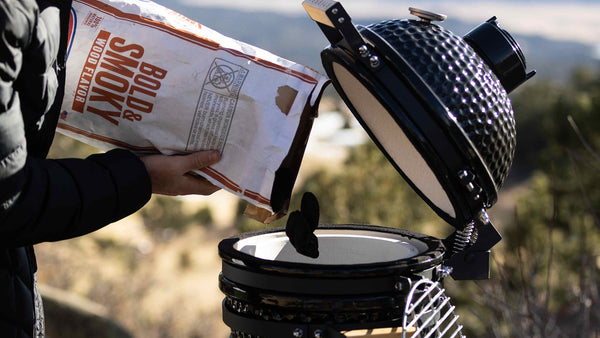
Best Way to Store Charcoal for Long-Term Use: Keep Your BBQ Fuel Dry and Ready
Imagine this: you’re ready for a backyard barbecue, your guests are hungry, and you open your charcoal bag-only to find a soggy, unusable mess. Wet charcoal can ruin your grilling plans in an instant, making it tough to light, causing uneven burning, and seriously reducing heat output. That’s why proper charcoal storage is crucial for every BBQ enthusiast. Whether you’re a weekend griller or a year-round pitmaster, knowing how to store charcoal will save you time, money, and frustration.
In this guide, you’ll learn the best way to store charcoal for long-term use. We’ll cover ideal storage conditions, the best containers, step-by-step storage tips, and what to do if your charcoal gets damp. With these charcoal storage tips, you’ll always be ready to fire up your grill-rain or shine.

Ideal Conditions for Charcoal Storage
The most important factor in charcoal storage is keeping your fuel dry and protected from the elements. Here’s what to watch out for:
-
Humidity: Moisture in the air is charcoal’s biggest enemy. Humid environments can cause charcoal to absorb water, making it difficult to light and reducing its effectiveness.
-
Rain and Snow: Direct exposure can quickly ruin a bag of charcoal. Even a small leak can lead to a soggy disaster.
-
Temperature Fluctuations: While not as critical as moisture, extreme changes can cause condensation inside containers-so avoid them when possible.
-
Sunlight: Direct sun can degrade packaging over time, but it doesn’t directly harm the charcoal itself.
Remember, using properly stored charcoal in a Kamado grill ensures optimal performance and flavor every time.
Best Types of Containers for Long-Term Storage
Choosing the right container is essential for long-term charcoal storage. Here are your best options:
-
Airtight Containers:
-
Pros: Excellent moisture protection, prevents crumbling, keeps charcoal fresh.
-
Cons: Can be more expensive; if charcoal isn’t fully dry, trapped moisture can still cause issues.
-
Plastic Containers with Tight-Fitting Lids:
-
Pros: Good moisture protection, durable, affordable.
-
Cons: Not always completely airtight; lids may crack or warp over time.
-
Original Packaging with Modifications:
-
Pros: Cost-effective if the bag is sturdy and convenient.
-
Cons: Not designed for long-term use, easily torn or penetrated by moisture.
-
Modification Tips: Seal with heavy-duty tape or double-bag for extra protection.
-
Metal Containers with Lids:
-
Pros: Extremely durable, protects from pests, some are airtight.
-
Cons: Can rust if not treated, may conduct heat if stored in the sun.
Step-by-Step Guide to Storing Charcoal
Follow these steps for the best way to store charcoal and keep it dry for months:
-
Choose the Right Container:
Select a container based on your needs and environment from the options above. -
Ensure Charcoal is Dry:
If your charcoal is even slightly damp, let it dry completely before storing. -
Seal the Container:
Secure the lid tightly or seal the bag with tape to keep out moisture. -
Pick a Suitable Location:
-
Store the container elevated off the ground to avoid ground moisture.
-
Keep it covered-in a garage, shed, or under a tarp.
-
Choose a well-ventilated area to prevent moisture buildup.
-
Check Periodically:
Inspect your charcoal after heavy rain or humidity spikes to catch problems early.
Additional Tips and Tricks for Charcoal Storage
-
Use a Desiccant Pack: Place a silica gel or moisture-absorbing pack inside your container for extra protection.
-
Store in a Cool, Dark Place: While temperature isn’t a major concern, a stable environment helps.
-
Rotate Your Stock: Use older charcoal first to ensure freshness.
-
Protect from Pests: Mice and insects can chew through bags and contaminate your fuel.
-
Properly Extinguish and Store Leftover Charcoal: Save partially used charcoal by fully extinguishing and storing it in a dry container.
Troubleshooting: Dealing with Damp Charcoal
If your charcoal gets wet:
-
Dry it Out: Spread it in direct sunlight or use a fan to help evaporate moisture.
-
Is It Still Usable? Yes, but damp charcoal may take longer to light and burn less efficiently. Use it for less critical cooks or as a starter for new, dry charcoal.
Conclusion: Ensuring Long-Lasting Grilling Success
Proper charcoal storage is the key to hassle-free grilling and delicious results every time. Invest in a quality storage solution and remember: dry charcoal means better BBQ. For more grilling inspiration, tips, and recipes, visit our Recipes Blog Hub, and don’t forget to check out the Beginner's Guide to Char-Grilling for more on charcoal as a fuel source.
Keep your charcoal dry, your grill ready, and your next barbecue a guaranteed success!
